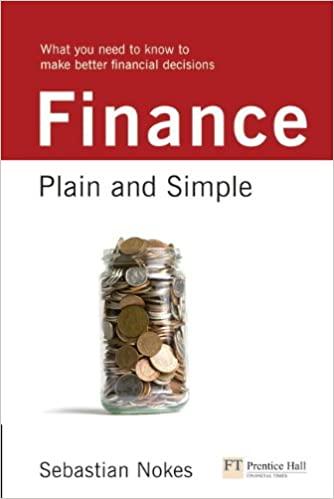Question
JLB Corporation is attempting to determine whether to lease or purchase research equipment. the firm is in the 27% tax bracket, and its after tax
JLB Corporation is attempting to determine whether to lease or purchase research equipment. the firm is in the 27% tax bracket, and its after tax cost of debtis currently 8%. the terms of the lease and of the purchase are as follows:
LEASE: Annual end-of-year lease payment of $25,200 are required over the 3-year life of the lease. All maintenance costs will be paid by the lessor;insurance and other cost will be borne by the lesse. the lesse will excercise its option to purchase the asset for $7,000 at termination of lease.Ignore any future tax benefit associated with the purchase of the equipment at the end of year 3 under the lease option
PURCHASE: The research equipment, costing $80,000 can be financed entirely with a 15% loan requiring annual end-of-year payments of $35,038 for 3 years. the firm in this case will depreciate the equipment under MARCS using a 3 year recovery period. (see the chart for applicable depreciation percentages).The firm will pay 2000 per year for a service contract the covers all maintenance costs;insurance and other costs will be borne by the firm. The firm plans to keep the equipment and use it beyond its 3-year recovery period.
A. Calculate the after-tax cash outflow associated with each alternative.
(Hint:
Because insurance and other costs are borne by the firm under both alternatives, those costs can be ignored here.)
B. Calculate the present value of each outflow stream,using the after-tax cost of debt.
C. Which Alternative-Lease of Purchase would you recommend? Why?
Step by Step Solution
There are 3 Steps involved in it
Step: 1

Get Instant Access to Expert-Tailored Solutions
See step-by-step solutions with expert insights and AI powered tools for academic success
Step: 2

Step: 3

Ace Your Homework with AI
Get the answers you need in no time with our AI-driven, step-by-step assistance
Get Started


